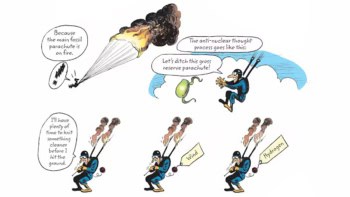Scientists may have discovered an explanation for one of the world's most mysterious natural phenomena - ball lightning. John Abrahamson and James Dinniss from the University of Canterbury in New Zealand suggest that ball lightning - a floating luminous sphere that is sometimes observed after conventional lightning - is due to vaporised mineral grains from the soil that have been kicked into the atmosphere by a lightning strike. These nanoparticles link together into chains to form a 'fluff' ball of silicon that is carried aloft by air currents. The grains react with oxygen in the air and burn slowly, releasing light in the process (Nature 403 519).
Ball lightning has only been seen during thunderstorms. The average ball lightning appears as a sphere about 30 cm across and lasts for about 10 seconds. The earliest reports of ball lightning date back to the Middle Ages. Many theories of ball lightning have been proposed, but none can explain all of the observed characteristics.
The lightning can appear in any colour, but is usually a white or yellow colour, and has a luminosity comparable with that of a 100 Watt light bulb. According to Abrahamson and Dinniss, their new theory can account for the majority of the properties of ball lightning.
As yet, however, they cannot explain why Ball lightning has occasionally been observed inside aircraft. “It could be caused by metal vapour from the air frame,” says Abrahamson, adding that he and Dinniss plan to publish this part of the theory soon.



